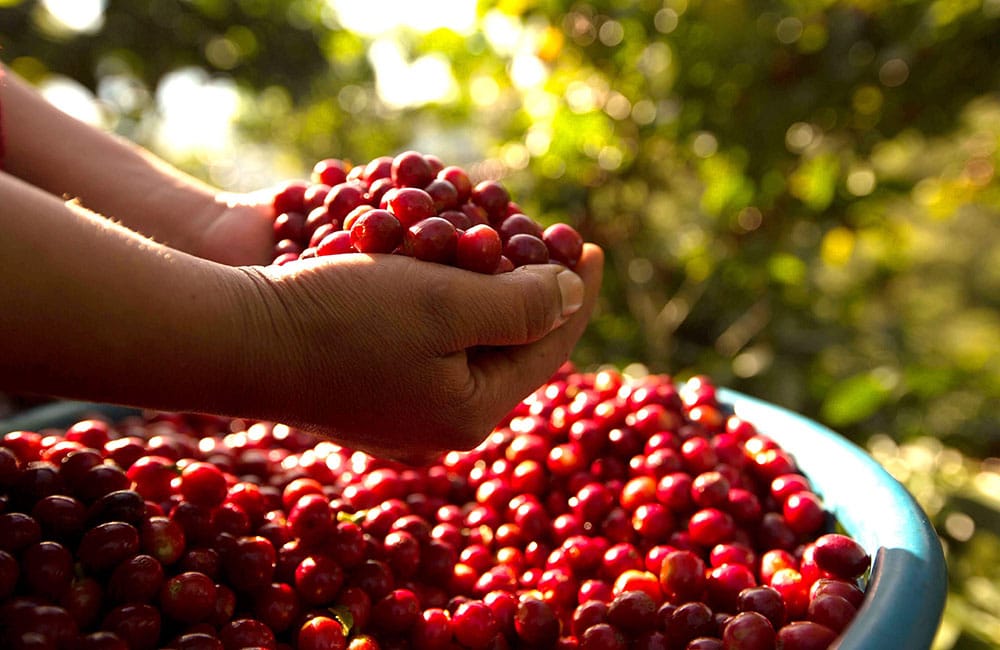Guatemalan coffee is recognized worldwide for its exceptional quality, complex flavor profiles and the diversity of its producing regions. With a rich coffee history, ideal climatic conditions and a tradition of cultivation that dates back centuries, Guatemala has consolidated its position as one of the most important countries in the production of specialty coffee.
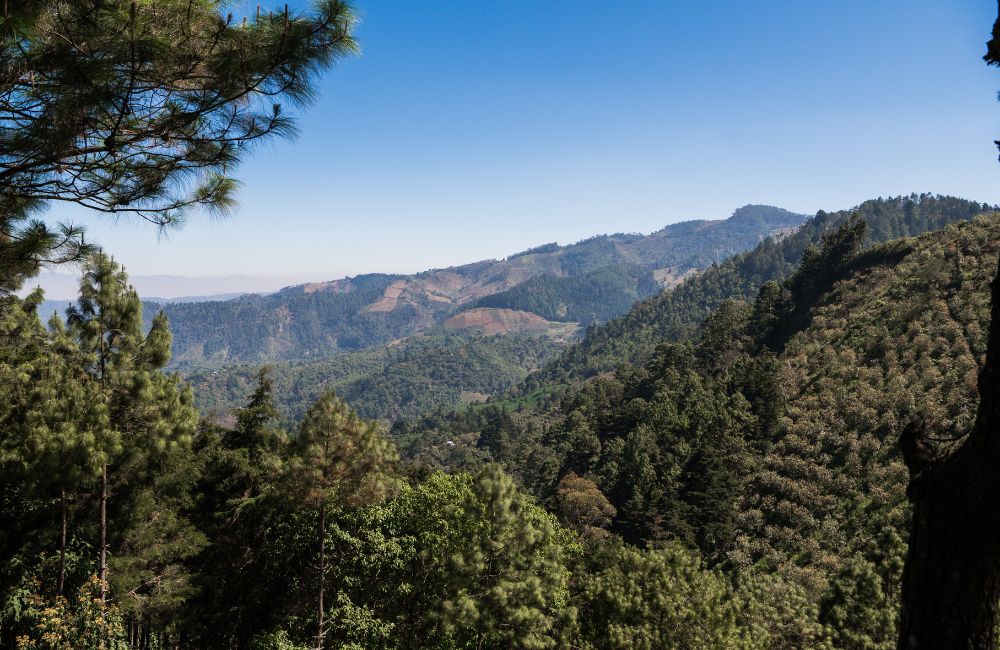
Specialty coffee plantation in Guatemala
Coffee cultivation in Guatemala began in the 18th century, when the colonists introduced the first coffee plants. However, it was in the 19th century when coffee production became the engine of the Guatemalan economy. Thanks to its diverse climate and nutrient-rich volcanic soils, Guatemala quickly became known for the quality of its coffee, which attracted the attention of international exporters.
2. Coffee producing regions in Guatemala

Coffee plantation in Guatemala
Guatemala has several coffee growing regions, each with unique characteristics that influence the flavor profile of the coffee:
Antigua: With volcanic soils and a temperate climate, it produces coffees with notes of chocolate, caramel and bright acidity.
2. Huehuetenango: Located in the northern mountains, it offers coffees with pronounced acidity, fruity notes and complex body.
3. Cobán: With a humid and cloudy climate, its coffees stand out for their vibrant acidity and spicy flavors.
4. Fraijanes: With volcanic soils and high altitudes, it produces coffees with an intense and well-balanced flavor.
5. Atitlán: Surrounded by volcanoes and Lake Atitlán, it offers coffees with a full body and floral notes.
3. Varieties of Guatemalan Coffee
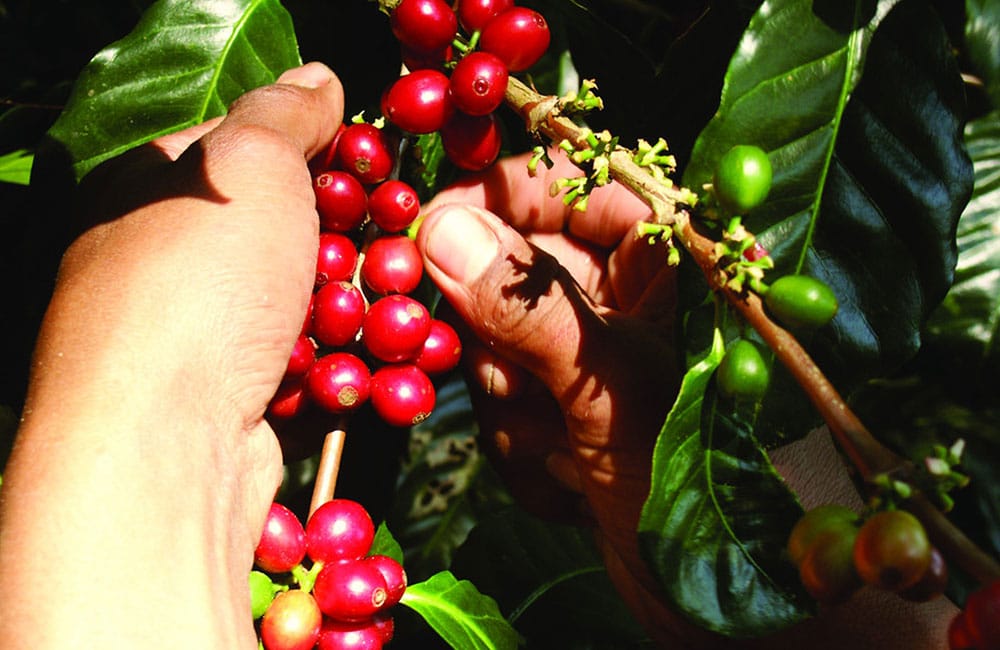
Manual harvesting of coffee cherries in Guatemala
Guatemala grows mainly Arabica coffee, with varieties including Bourbon, Caturra, Catuai and Typica. These varieties adapt well to the diverse altitudes and climates of the country, which contributes to the richness of flavor profiles.
4. Cultivation and Processing
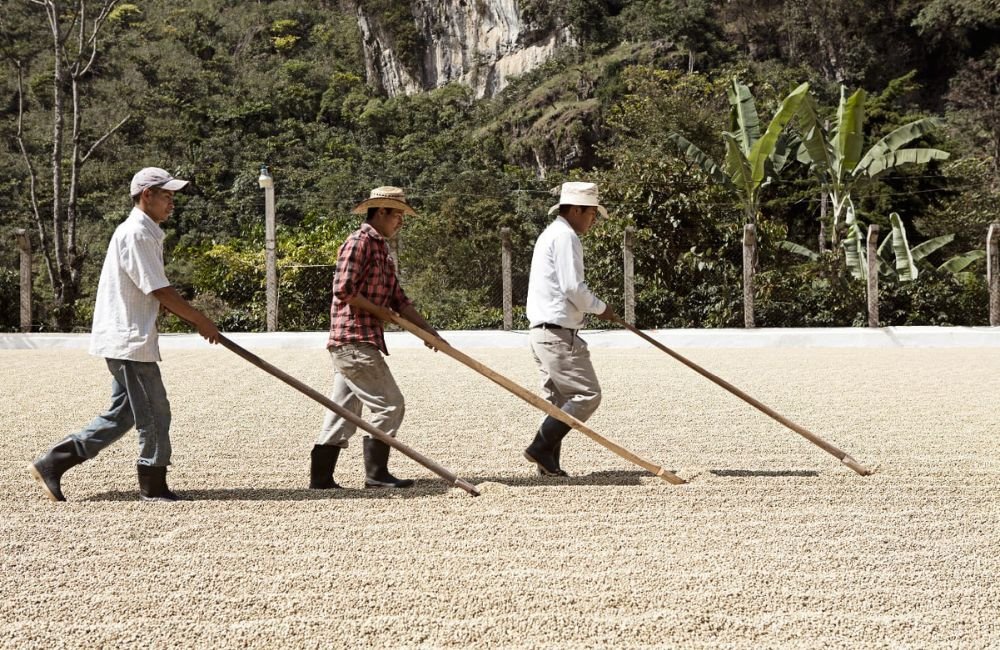
Specialty coffee drying in Guatemala
Guatemalan coffee is mainly grown on small farms, where farmers use traditional and sustainable methods. The most common processing processes are:
Washing: Highlights the acidity and clarity of flavors.
Honey: Adds sweetness and a rounder body.
Natural: Intensifies fruity notes and complexity.
5. Harvest Season
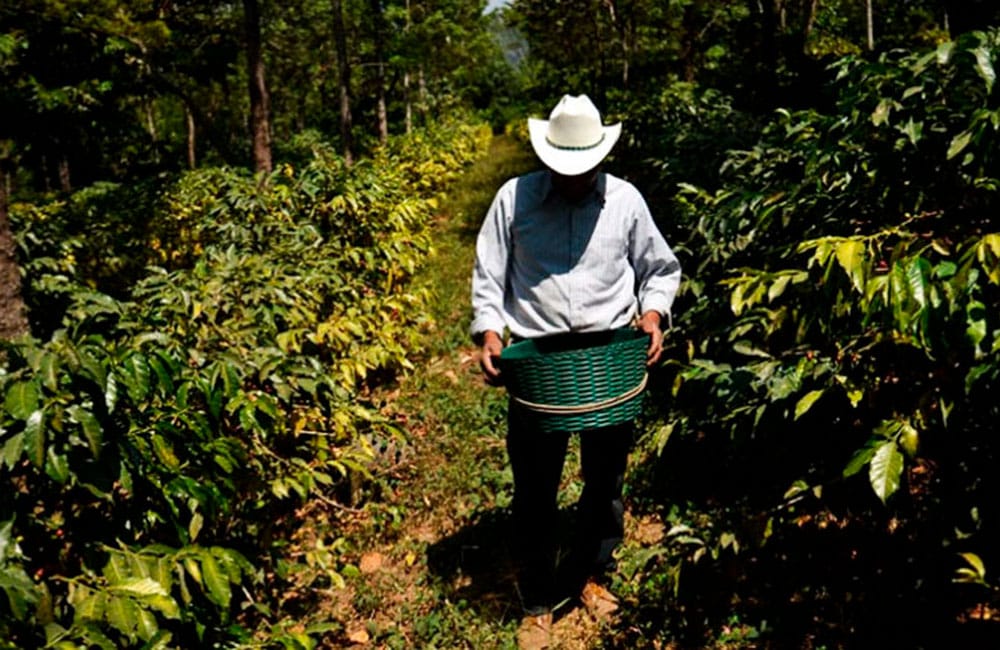
Specialty coffee harvesting in Guatemala
The coffee harvest in Guatemala varies according to the region, but generally takes place between November and April. During this period, coffee cherries are picked by hand to ensure the selection of the ripest fruits.
Enjoy our seasonal coffee, visit our store.
- Filter & EspressoCold BrewSpecial process
Edwin Noreña Red – Colombia – Mossto 72h Co-fermented
36,00€ – 132,00€ VAT included - Filter & Espresso
Oscar Hernandez Wush Wush – Colombia – Thermal Shock
36,00€ – 132,00€ VAT included - Filter & EspressoCold BrewSpecial process
Adrian Lasso Pink B. – Colombia – Washed anaerobic 60h
23,00€ – 84,00€ VAT included
6. Flavor Profile of Guatemalan Coffee
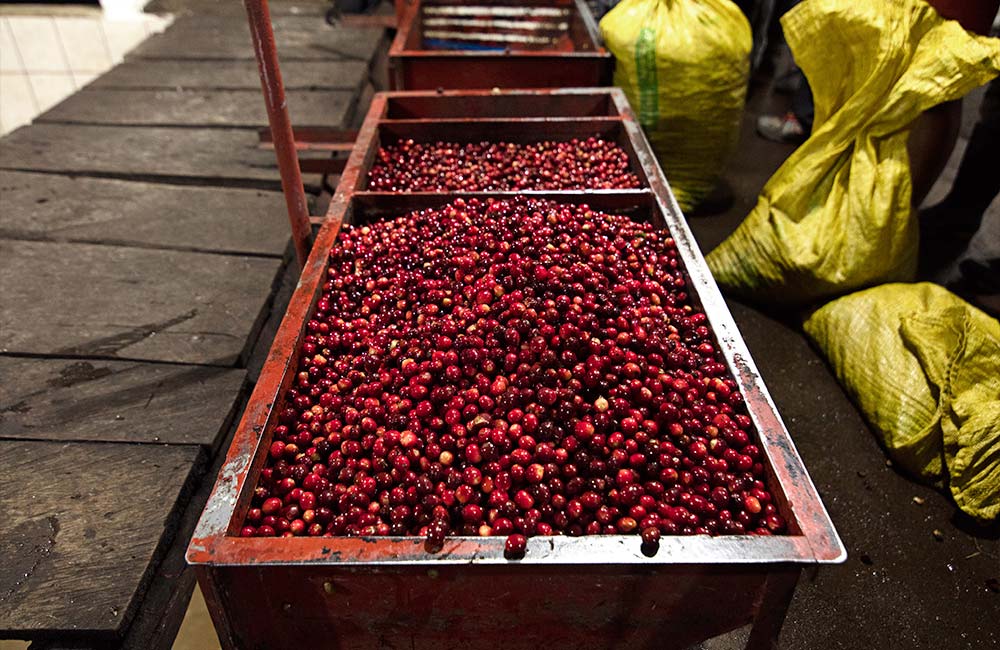
Processing of specialty coffee
Guatemalan coffee is known for its:
Bright acidity: Similar to citrus fruits.
Full body: Silky and with good structure.
Flavor notes: Chocolate, caramel, red fruits, spices and flowers.
Intense aroma: Sweet, spicy and floral.
7. Economic and Social Impact
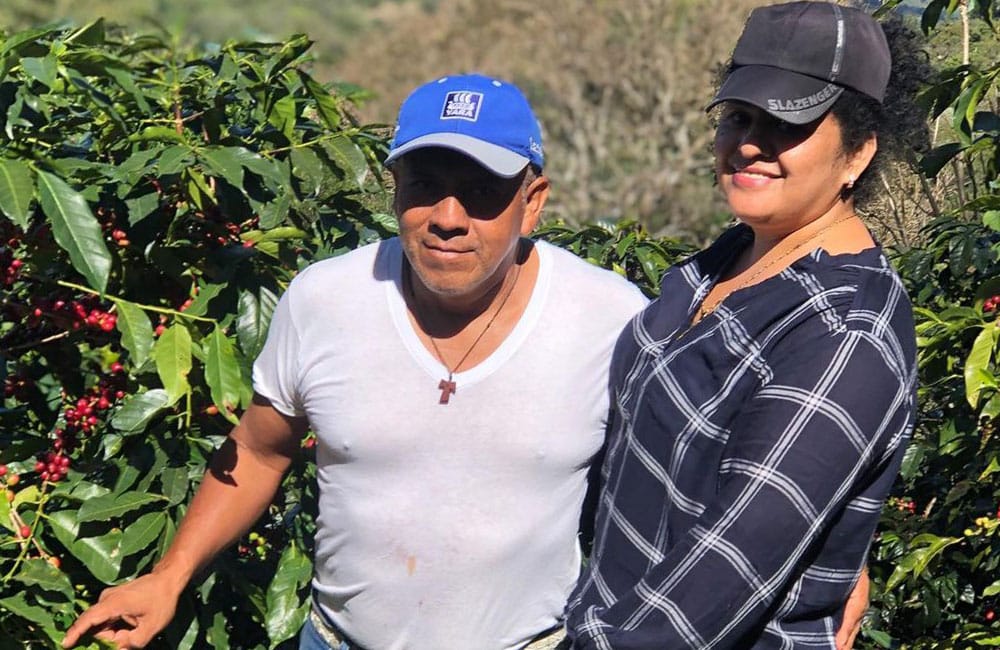
Coffee grower couple from Guatemala
Coffee is one of Guatemala’s main exports and a vital source of employment for millions of people. The coffee industry supports small producers, cooperatives and rural communities, contributing to the economic and social development of the country.
8. Curiosities about Guatemalan Coffee
-
Denomination of Origin: Some regions, such as Antigua, have a protected denomination of origin.
International awards: Guatemalan coffees have won multiple awards in specialty coffee competitions.
Microclimatic diversity: Guatemala has more than 300 microclimates, which allows for a wide range of flavor profiles.
9. How to Prepare and Enjoy a Good Guatemalan Specialty Coffee
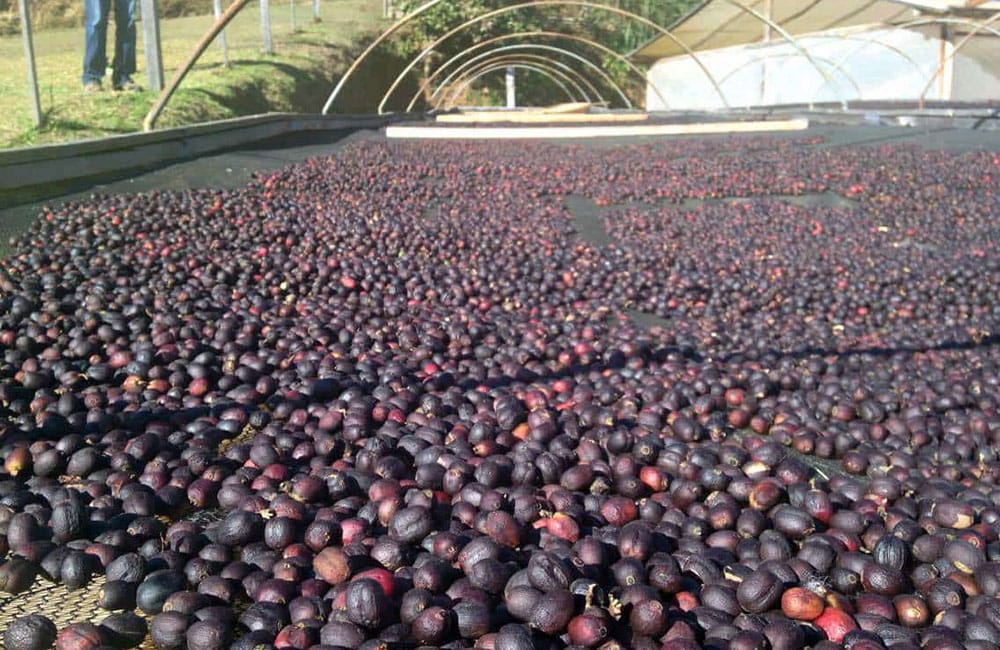
Specialty coffee drying in Guatemala
Recommended Methods:
V60 and Chemex: To bring out acidity and complexity.
French Press: For a fuller body and more intense notes.
Espresso: To highlight sweetness and balance.
Conclusion
Guatemalan coffee is a reflection of the passion, dedication and tradition of its producers. Each cup tells a story of cultural richness, biodiversity and a commitment to quality. To discover Guatemalan coffee is to embark on a sensory journey that delights and surprises with every sip.

